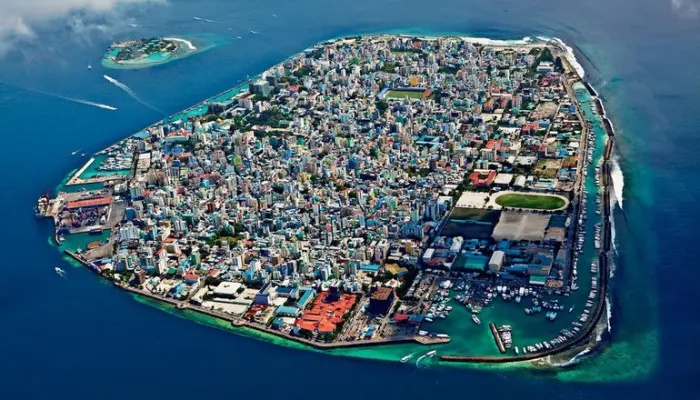A trip to the Maldives is a dream for many travelers, and Malé is the starting point for expeditions to discover the treasures this country offers. While the capital of the archipelago might not be the best thing you see during your trip to the Maldives, it's definitely worth a visit!
A Bit About the City
Malé is the capital and the largest (possibly the only) city of the island state of the Maldives. It is located roughly in the middle of the archipelago of 1200 islands, on the southern side of Kaafu Atoll, with a population of 104,403. Its name comes from the word "Mahalay," which means "royal palace" or "capital" (king's island) in Sanskrit. Moreover, Malé hosts all the state buildings and government services of the country, as well as the only airport of the Maldives and the central port. Although Malé is quite different from the rest of the Maldives, it's definitely worth exploring while you're there. So, I've selected what I think is worth your attention if you are visiting the city for the first time.
Republic Square
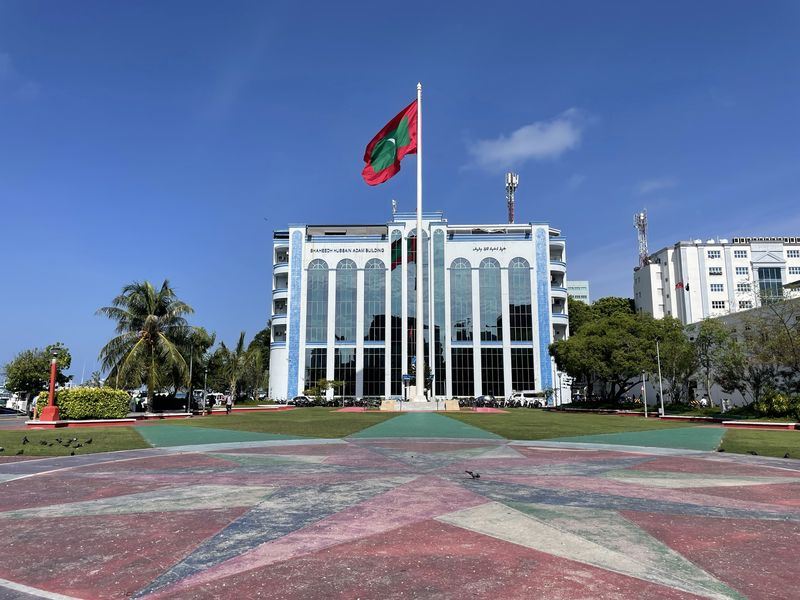
Republic Square (Jamboree Maidan), built in 1989, is possibly the only square in all of the Maldives! Located in front of the central jetty of Malé port (Jetty 1), it is considered the most central point of the city. At one end of the square is a charming fountain, and at the other, a tall flagpole with the country's flag. Around the square are many government buildings, such as the main offices of the police, National Security Service (SNS), mint, Ministry of Defense, and many others.
Fish Market
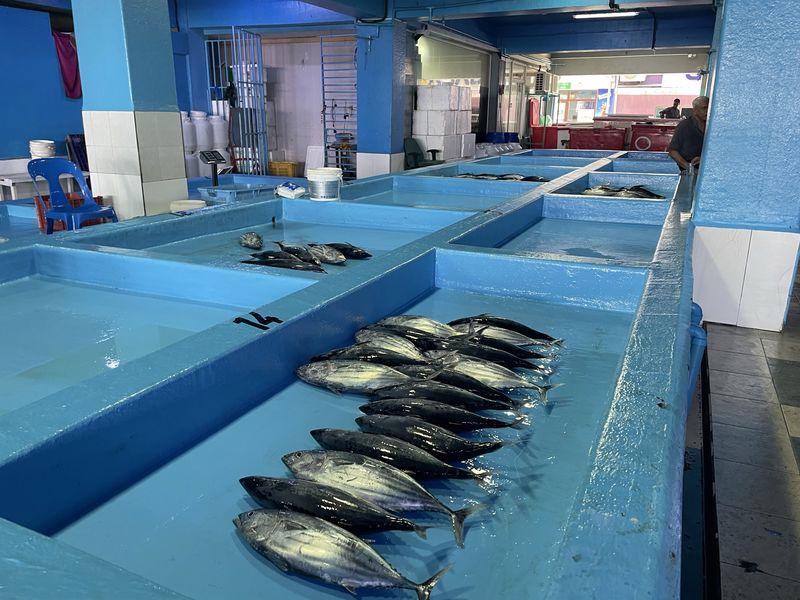
If you want to get a feel for the daily life of locals in Malé, you won't have to look far. The city's Fish Market, located next to the port, is undoubtedly the commercial center of the country's most important industry - fishing. Unlike most similar markets, there's no set schedule here, and you'll never find it closed. Throughout the day, fishermen from all over the country sail to the edge of the market and unload their daily catch. The most popular fish for sale is, of course, tuna, which can be seen in various sizes - from very small to truly enormous! It's worth walking through the market and watching the locals clean and fillet fish, which looks like a show.
Maldives National Museum
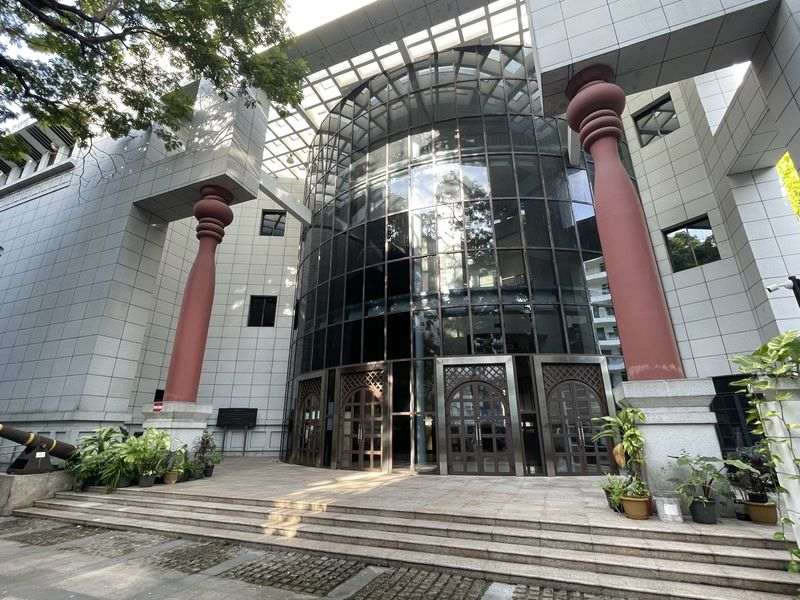
The Maldives National Museum, operating since 1952, holds a large collection of the country's historical artifacts. The exhibition starts on the lower floor with a gallery dedicated to the ancient and medieval periods of Maldivian history. Displayed items include weapons, religious items, and household objects, as well as numerous impressive carved Arabic and Thaana wooden artifacts, reflecting the country's conversion to Islam in 1153. The upper floor presents the modern period, where valuable examples of Maldivian lacquered boxes, famous in the Maldives, are displayed. In addition, you'll find various items of ancient technology, such as the first gramophone, telephone, and a huge computer. One of the strangest exhibits you'll encounter in the museum is the minutes of the famous underwater cabinet meeting held by President Nasheed in 2009. Also interesting is the impressive marine collection, the highlight of which is the 6-meter skeleton of the very rare Longman's Beaked Whale, which has yet to be spotted alive in the ocean! Unfortunately, during the protests against former President Nasheed in 2012, fanatical extremists broke into the museum and destroyed about 30 ancient Buddhist coral sculptures from the country's pre-Islamic period, as they were considered "idols." Security remains tight. Entrance for locals costs 25 Rufiyaa (about 1.5 euros), while tourists have to pay 155 Rufiyaa, or about 9.5 euros.
Mulee'aage
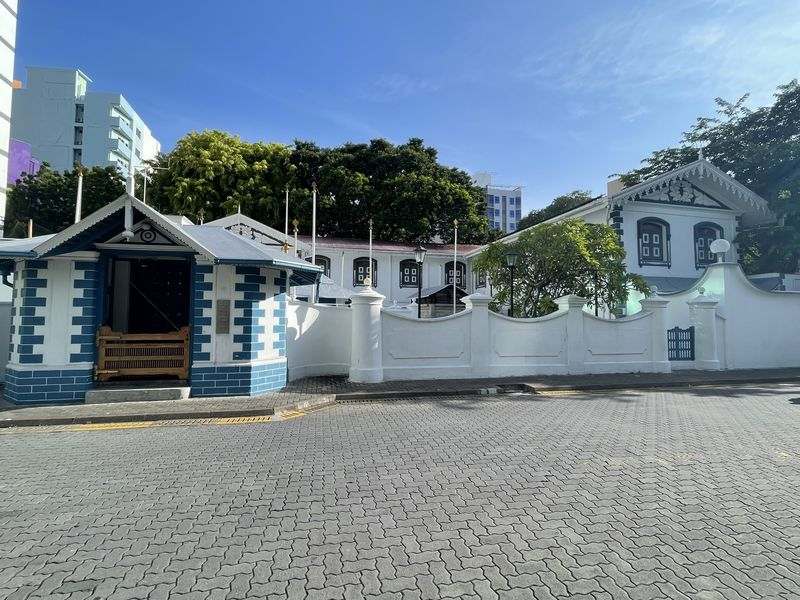
The Maldives Presidential Palace, or Mulee'aage as it is officially called in the local dialect, is the residence of the current president of the Maldives. The palace was built from 1914 to 1919, and in 2019 it celebrated its 100th anniversary. It is located in the center of Malé, on the site where the sultans and kings' houses used to be. Mulee'aage was built by Sultan Mohammed Shamsuddeen III for his son, Prince Hassan Izzuddin, as a gift for his return to the Maldives after finishing his education in Ceylon. The prince lived in the palace from 1920 to 1934 when he was arrested, after which the building remained abandoned until World War II. Since then, the building has been used for various government administrative purposes or as accommodation for visiting heads of state and other officials. The current president, Ibrahim Mohamed Solih, has lived in Mulee'aage since taking office in November 2018.
Sultan Park
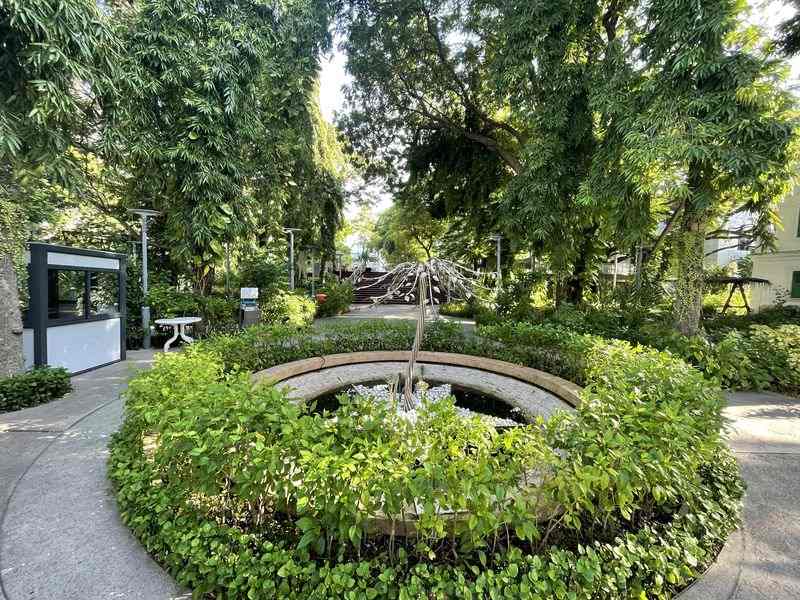
Sultan Park, also known as Rasrani Bageecha, is the largest and most central public park in Malé. It was formed after transforming the royal gardens of the palace laid out in the 16th century. The huge iron gates at the entrance to the park are the only surviving element reminiscent of the palace's former glory. This park is known for its green and peaceful atmosphere, making it an ideal place for picnics and walks. It has ponds surrounded by white lilies and plenty of singing birds on the tree branches. The best time to visit is early in the morning or late in the evening.
Islamic Centre
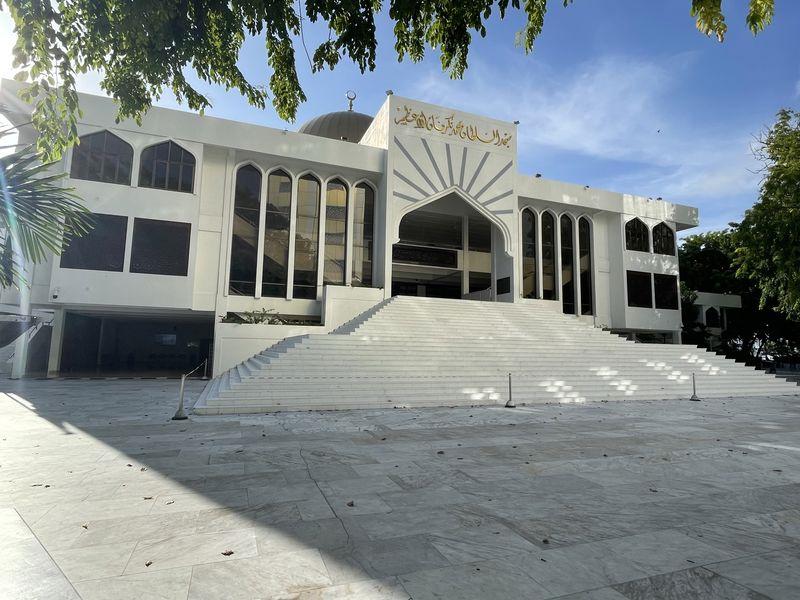
Directly opposite the park, you'll find one of the city's most beautiful buildings - the Islamic Centre. Its official name is Masjid al-Sultan Muhammad Thakurufaanu Al Auzam, and it is considered a bright example of Islamic architecture. The Islamic Centre was built with the support of many Islamic countries in the 1980s and was officially opened by President Maumoon Abdul Gayoom in November 1984. The main distinctive features of this colossal structure are the huge golden dome and the 43-meter minaret. Today, it houses the Ministry of Islamic Affairs, an Islamic library, and numerous conference halls, and is said to accommodate up to 5,000 people simultaneously. Finally, nearby is the Victory Monument, built in memory of the incredible victory of Maldivian soldiers over the "Tamil Tigers" - a militant movement.
Sinamalé Bridge
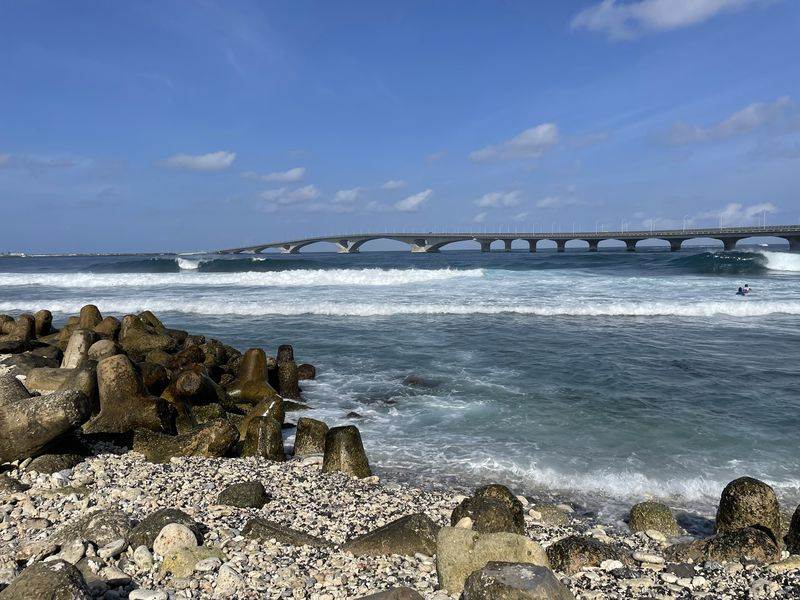
The Sinamalé Bridge, also known as the China-Maldives Friendship Bridge, is an attraction in itself. It spans 2.1 kilometers and was financed by China as a gesture of friendship. The bridge connects the capital Malé to the island of Hulhumalé, where the country's international airport is located. The beautiful entrance to the bridge symbolizes Islam along with unity and national consciousness of the Maldives. Finally, from there, you can enjoy a panoramic view of the entire city, although traffic jams are common during peak hours.
Tsunami Monument
.jpg)
The Tsunami Monument, located at the westernmost point of Malé, was built in memory of the victims of the devastating 2004 tsunami that ravaged many countries around the Indian Ocean. Unfortunately, one of these countries was the Maldives, where an estimated 74 people died, hundreds were injured, and material damage on many islands was immense. The 20 steel spheres surrounding the monument symbolize the country's 20 atolls, and the rising columns represent the tsunami waves. The construction's rods pay tribute to the disaster's victims, with the names of the 74 deceased engraved on the structure. Finally, it is one of the best places to watch the sunset in the capital, and surfers prefer it for riding the waves.
King Salman Mosque
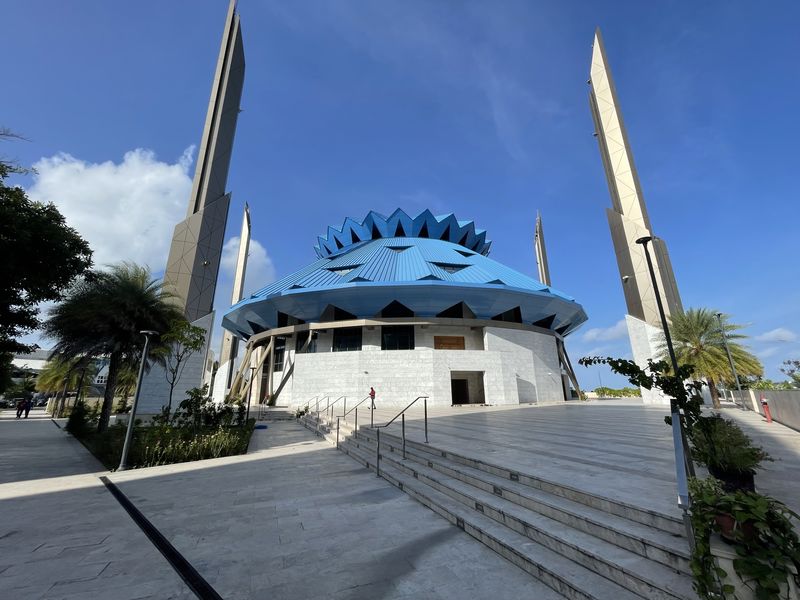
The King Salman Mosque is the largest and most impressive mosque in Malé, accommodating 10,000 worshippers! The mosque was designed to celebrate the 50th anniversary of Maldives' independence. Its construction began in 2018, and despite not being fully completed, it unofficially opened in April 2022. The mosque's construction was partially financed by Saudi Arabia and named in honor of King Salman of Saudi Arabia. Architecturally, it's quite interesting, as it doesn't resemble a typical mosque. It's a six-story building with five minarets symbolizing the five pillars of Islam, but without the traditional dome. Instead, the structure resembles a Bedouin tent in the desert! Entrance to the mosque is free.
Resorts
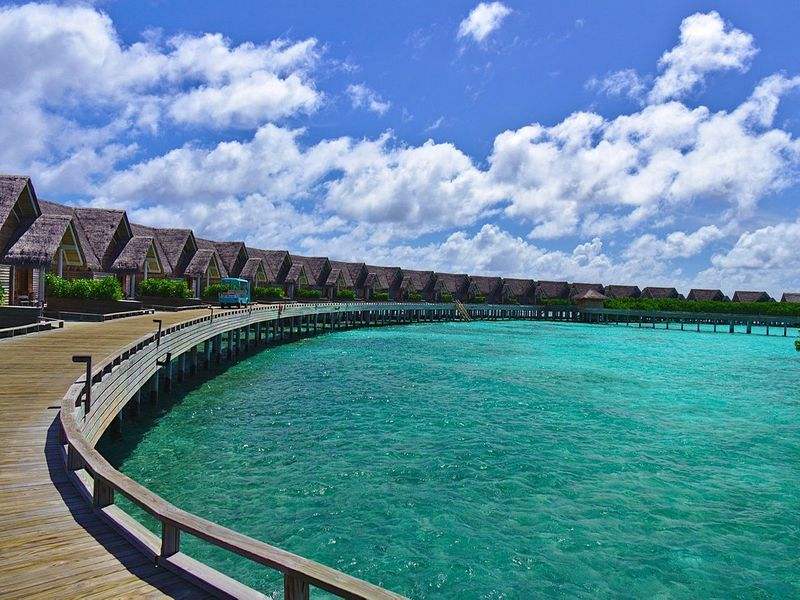
For many years, a trip to the Maldives meant staying in a luxurious resort, making it accessible only to a few. These luxury resorts are located on private small islands throughout the Maldives archipelago and offer top-class services. Once you arrive in the country at Velana International Airport, the respective resort will organize your transfer to your chosen island by boat or seaplane. During your stay, you will feel like royalty, living moments worthy of your most beautiful dreams. Depending on the packages chosen, spa services, huge buffets with food for every taste, water activities, and more are offered. Of course, such an experience is not cheap - a night in such a resort starts from 700 euros and can reach several thousand euros. This is why the Maldives is one of the most popular honeymoon destinations.
Local Islands
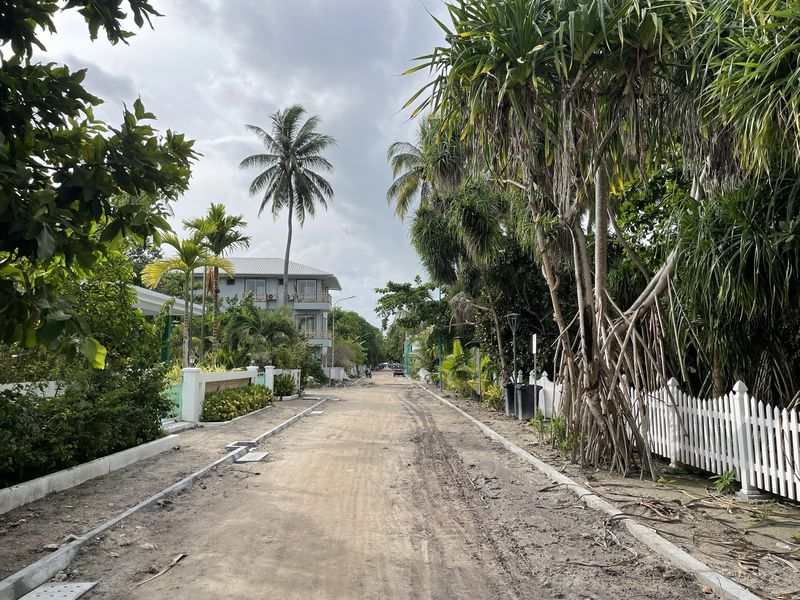
I personally believe that you haven't visited the Maldives if you haven't been to one of the islands where locals live. You won't be able to interact with the people of this country, see their life, or try authentic local dishes! These are absolutely safe places with zero crime, totally dependent on tourism. Untouched and unpretentious places that only started accepting tourists in the last years, specifically since 2009. The locals, despite living on the brink of poverty, are happy and friendly with everyone, even if they see you for the first and possibly the last time. And, of course, prices there are quite affordable. The Maldives has 1192 islands: large, small, inhabited, uninhabited, resort, with locals. As you can imagine, the choice is huge, but we chose one of the islands in the Alif Alif Atoll, namely Ukulhas, and did not regret it for a second. It's a tiny island that you can easily walk from one end to the other in just fifteen minutes. It is known for its stunning beach (bikini beach), hospitable residents, and well-organized waste disposal system. Finally, other islands in this atoll, Rasdhoo and Mathiveri, which we briefly visited, were no less beautiful.

Where to Stay
Although Malé is a small city, you will easily find a place to stay, as most tourists hardly ever stop in the capital. One hotel I can recommend in Malé is Beehive Premier, offering free transfers from the airport, as well as beautifully renovated rooms with sea views. As for the local islands, I can suggest the Ranthari Hotel & Spa on Ukulhas, offering full immersion in local life.
How to Get Around
I can assure you of one thing: while you are in Malé, you won't need any transport. Malé is a tiny island that you can easily walk across in just a few minutes. Distances are small, and all the sights are concentrated near the port. If you do need transport, there are buses that run all over the island and to the airport. Finally, taxis are very cheap but usually accept only cash.
What to Eat
Maldivian cuisine harmoniously combines the gastronomic traditions of India, Thailand, and China. As a Muslim country, the Maldives prohibits pork (and alcohol), meaning you will mostly find dishes with poultry, beef, and of course, a lot of fish, especially tuna! In addition, most national dishes contain rice, various spices, usually curry, coconut, lemon juice, and fish broth (garudhiya). Of course, in the Maldives, you can also enjoy delicious exotic fruits such as passion fruit, mango, pineapple, grapefruit, bananas, papaya, and others, which are also used as ingredients for juices, smoothies, and desserts. Some of the country's most popular dishes include Mas Huni (noodle with tuna, onion, coconut, and chili), Kuli Boakiba (boiled fish with spicy spices and flatbreads), Fiyaa Satani (onion and green chili salad), Kuparisi Torah (spicy soup with zucchini, curry, and chili), Handulu Bondibay (rice pudding dessert with coconut), and finally Dhufun (flatbreads with various spices). To try authentic Maldivian flavors, I recommend visiting the Sea House cafe, and for coffee and dessert, head to Seagull Cafe House.
Useful Information
To travel to the Maldives, you need a foreign passport valid for at least 6 months, while a visa is not required in advance. Upon entry into the country, your passport will simply be stamped. In the Maldives, the Dhivehi language is used, although many people know English to communicate with tourists. Nevertheless, everyone is ready to help if they know the language. The country's currency is the Rufiyaa (MRF), and its current exchange rate is 1 euro = 16.44 Rufiyaa. However, the local currency plays a secondary role, as most transactions are made in US dollars. Euros are also accepted everywhere. I would recommend you to carry cash, preferably US dollars, as many stores will charge a fee for using a card or local currency. For transfer from Malé airport, you have several options. If you plan to go directly to another island, you need to arrange with your accommodation to organize a speedboat or seaplane. If you're going to Malé, most hotels offer free transfers, and taxis are very cheap. The best time to visit Malé and the Maldives in general is from November to April, that is, after the monsoon season.
